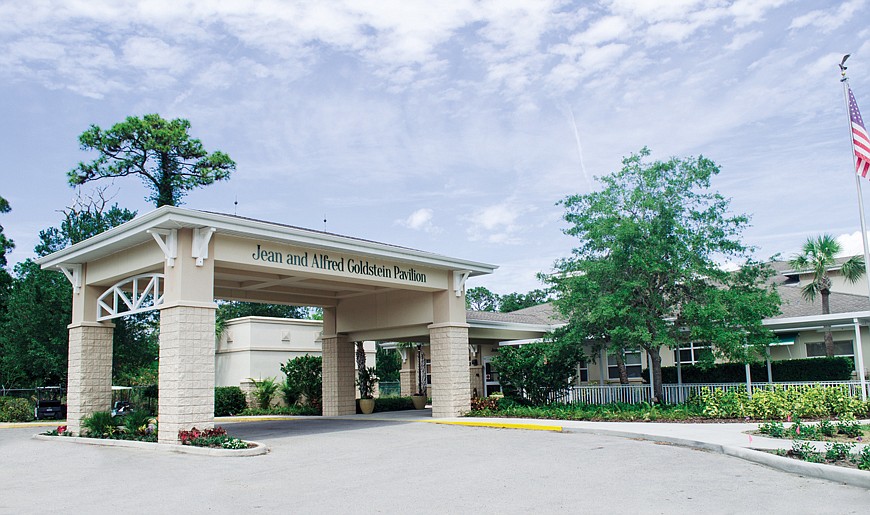- May 15, 2025
-
-
Loading

Loading

In 1938, Frank J. Conrad, Ben Handler and Al Shogren recognized a great need for a place to care for Sarasota’s elderly population that was in poor health and with limited incomes.
These three men led the Kiwanis Club of Sarasota in creating, fundraising and building this home that opened Nov. 16, 1948. Seventy years later, that Kiwanis vision is still alive — the Pines of Sarasota Rehabilitation & Senior Care Community, the not-for-profit rehabilitation and senior care community, nestled in the heart of Sarasota on Orange Avenue between 12th and 17th streets.
Originally named the Sarasota Welfare Home, the facility began with two residence halls and a dining room. Today, the Pines of Sarasota sits on a 25-acre campus with 19 buildings, housing 243 residents, employing more than 400 people and is at the tail-end of a $3.9 million capital campaign to renovate its assisted living facility.
Residing at the Pines are retired teachers, construction workers, police officers, firefighters and performers, many of them former circus entertainers. Janet Ginn, president of the Pines of Sarasota Foundation, says they are the people who helped build Sarasota.
More than 50% of these residents have outlived their resources.
Ginn shared that Greystone, a trusted adviser in senior living since 1982, conducted a market study in August 2016 and updated it in December 2017 noting the Pines was the largest provider of beds to Medicaid residents in Sarasota, Manatee and Charlotte counties. “It takes about $7,500 annually per person above and beyond what Medicaid pays to take care of them,” she says. To cover the shortfall, the Pines needs to raise $1 million a year.
That’s why the Pines of Sarasota Foundation, which supports the Pines’ endowment, capital and program needs, established the Mission Fund. The fund enables Pines residents who have outlived their resources to continue to receive care and have a safe place to live.
Many of the beneficiaries of the Mission Fund came to the Pines as paying residents. They range in age from 80 to 105. Ginn says most often there are three primary contributors to residents finding themselves with no means: longevity, health care costs and poor planning.
The number of elderly in similar circumstances is expected to mushroom. Over the next three decades, the population aged 65 and over is projected to be 83.7 million, with baby boomers largely responsible for the increase.
“It’s a different world,” says John Raleigh, a certified financial planner with Sarasota-based Raleigh & Associates. “Twenty-five years ago, people would retire at 65 and expect to die at 73 or 74. Now when you retire, your retirement is about the same amount of time that you worked.”
“That’s why the Mission Fund is more important today,” says Ginn. “We never want anyone to apologize for living too long. Living a long life should be celebrated. Pines offers peace of mind not only for the resident, but also for families.”
But let’s be honest, it is expensive to age. Says Raleigh: “If you’re a married couple, you need $250,000 to $300,000 put in place for health care or potential health care costs. And that’s a substantial portion of people’s retirement funds.”
Oftentimes, taking care of the health care costs of an ill spouse drained the resources of many Pines residents. What’s more, Ginn says, these residents also have children in their late 70s and early 80s dealing with their own health issues and related costs, leaving them unable to contribute to their parents’ care.
Ginn is careful to point out the people outliving their resources weren’t frivolous with their money. They were working-class people who didn’t have a 401(k) or used what money they had to put their children through college.
Raleigh says it’s tough for people to believe how much they need to set aside for retirement and that outliving their resources won’t happen to them. “As an industry,” he says, “we’re still not doing a good job helping people see the reality of it. It’s scary.”
To a great extent, that’s why the Pines exists — to fill the need those visionary Kiwanians saw 70 years ago. “We want to give individuals who have longevity a peaceful, loving life,” says Ginn.
While the Pines of Sarasota Foundation is just about $200,000 away from meeting its $3.9 million goal for its Assisted Living Renovation, Ginn says, “Where our needs are now is for the Mission Fund.”
The Mission Fund campaign begins Aug. 1 and will conclude Dec. 31 with a goal of $1 million for the 2019 shortfall of Pines.